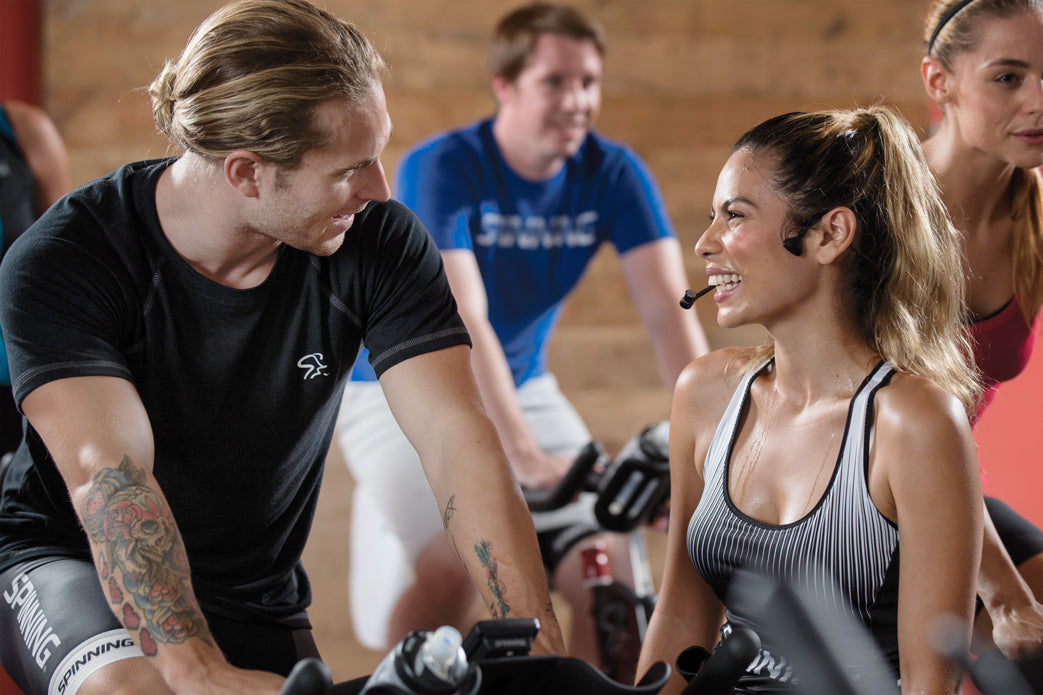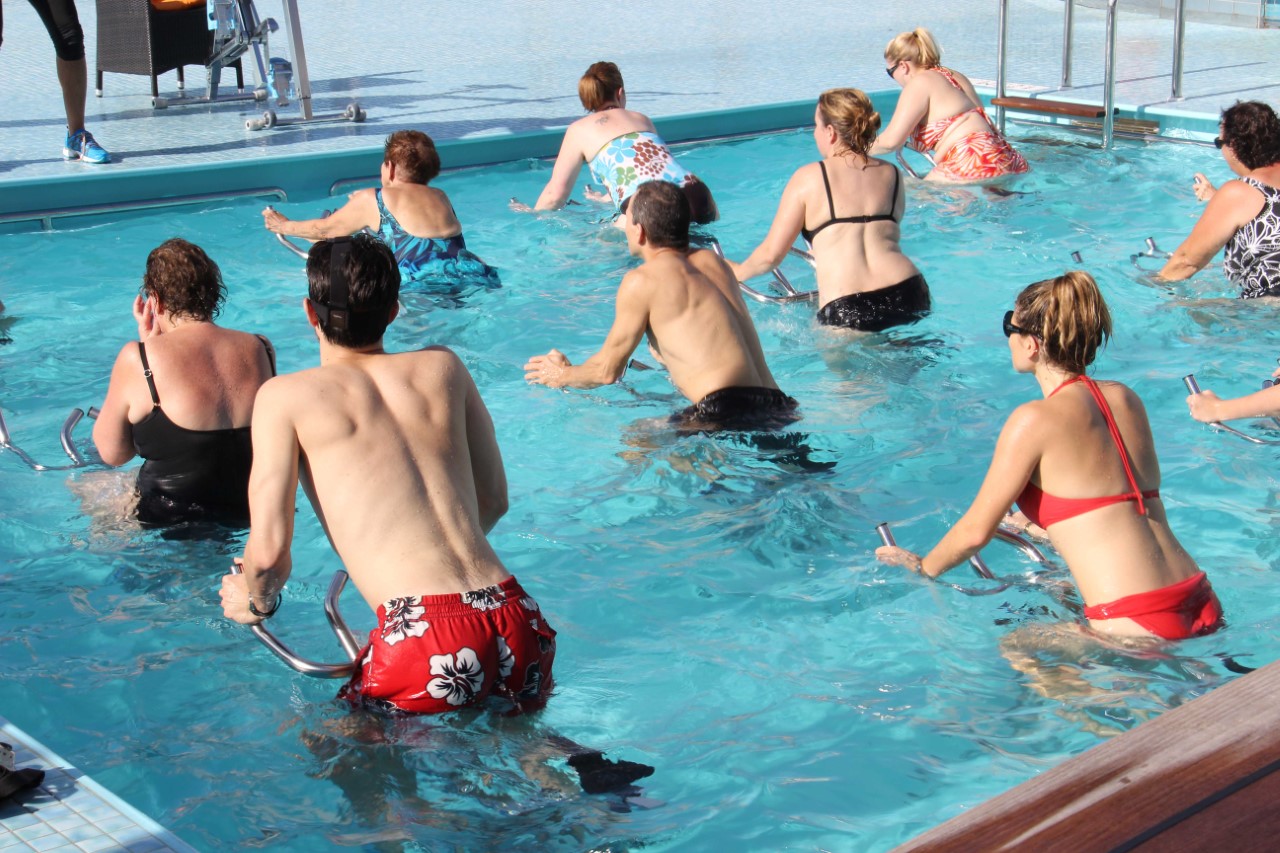As the Spinning® program continues to grow in popularity, instructors are continually challenged to reach students with wide-ranging backgrounds and experience levels. Whether they are roadies, indoor enthusiasts, triathletes or brand-new to fitness altogether, it’s important to observe and adapt to the needs and capabilities of each and every student under your guidance.
Want to earn a quick CEC? Read the article below, then take the corresponding quiz for a quick credit towards your recertification.TAKE THE QUIZ
Kindly Correct Common Misconceptions & Mistakes
With any student, you must explain the importance of cadence (measured in the revolutions per minute or RPM of the pedal cranks). Many first-time riders think a Spinning® class involves pedaling as fast as you can. They think they are getting a great workout based on effort alone. But, is pedaling as fast as possible really helping them get into optimal shape and enhancing their athletic performance? Probably not. In fact, without the right cadence ranges and the proper amount of resistance, each student’s ceiling for potential fitness gains becomes significantly hindered.
While I was teaching a Spinning® Instructor Certification last winter, one of my students was pedaling at a very high cadence (120 RPM +) and bouncing in the saddle. As such, I suggested that she add resistance to help slow her pace to an efficient level. After five or six turns, she finally added enough resistance to slow her cadence down to 90 RPM. “Oh,” she said, “You meant a hill!” When I explained that it wasn’t a hill – that it was actually simulating a flat road – she was shocked. Since she had always relied on the flywheel for momentum, she never learned to turn the pedals with adequate resistance. Not surprisingly, after three years of taking regular Spinning classes, she hadn’t lost any weight or developed the power in her legs required to climb hills. Rather than riding her bike and getting the most out of her training, the bike had ridden her.
Reinforce the Indoor Elements
So, why do students seem drawn to riding at such high cadences? Well, that's simple – it's easier! While a cycling background isn't a prerequisite to becoming a Spinning® instructor, it is helpful for instructors to ride outdoors occasionally to better understand cycling cadence. For example, pedaling at a cadence of 120 RPM on the road is nearly impossible to maintain (unless you are a highly-trained cyclist on a flat road). Similarly, riding on a flat road in your bike’s granny gear (the lowest and easiest gear that’s designed for pedaling up steep hills) gets you nowhere fast, and you will bounce in the saddle the whole way there. Put simply, when riding outdoors, cyclists need the appropriate gear to propel the bicycle forward. To apply the same philosophy indoors, riders need to add proper resistance on a Seated Flat to elicit desired performance and training goals.
Even if you are or aren’t a dedicated outdoor cyclist, it's important for Spinning instructors and students alike to understand the difference between indoor and outdoor cycling mechanics. Riding outdoors presents a host of elements that don't exist indoors, such as road and wind resistance. On a Spinner® bike, we simulate the friction of the road and the force of the wind with the resistance knob. But the amount of resistance is entirely up to the student. Through good coaching, you can help the student apply the appropriate amount of resistance to simulate the desired terrain, and, as a result, they will see real results.
Optimize Cadence, RPMs & Resistance
So, what is the appropriate amount of resistance? Studies have shown that a higher cadence is mechanically less stressful and leads to an improved economy. In fact, elite cyclists often work on increasing their "preferred" cadence to somewhere in the mid to high 90s (RPM). These parameters are echoed in the Spinning® program’s cadence guidelines and are rooted in the RPM of professional cyclists in real races. Over our 25-year history, we have found that the most efficient cadence on a simulated flat road is between 80 and 110 RPM. Since there are both motor learning and physiological components to finding the right cadence, Spinning students should mimic the approximate cadence applied outdoors – or slightly higher – to train these two areas. Riding a Spinner® bike at high cadences with little to no resistance does not train the neuromuscular system to respond more quickly.
Meanwhile, dedicated cyclists training for a race or event should focus on increasing their average cadence. When Chris Froome won the Tour de France in 2015, his average cadence was 97 RPM. Even though Froome is a world-class cyclist, his cadence still falls within the Spinning program’s prescribed range of between 80 and 110 RPM on flat roads. As an instructor, you can improve your rider's’ performance by challenging them to maintain that 97 RPM goal with slight increases in resistance. This will train your students to adapt to the resistance and raise their average cadence over weeks and months of classes.
Encourage, Educate and Enjoy the Ride!
The beauty of the Spinning® program is that it's designed so that anyone - young or old, near or far, fit or out of shape - can walk into any class on any given day and have a positive experience that yields results. The program enables riders of all abilities to personalize each ride to achieve individual training goals in an invigorating group setting. By reinforcing the basics with your students, from terrain adaptations to resistance adjustments, you can reassure that the fundamental knowledge that drives the programs results is never pushed to the waist-side.
Then, you and your students can reap the full benefits of the program: leg strength, muscular endurance, speed and improved fitness. Remind your riders to turn the pedals, rather than let their pedals turn them. Results can be sky-high - the experience - as invigorating as any when science-based knowledge and an genuine fulfillment are guiding your path. Lastly, above all else, never forget to remind your students to #EnjoytheRide!
Training Drills
These drills have two completely different objectives. One works on higher cadences while improving your economy and pedaling technique in the saddle. The other works on lower cadences and higher resistance while climbing. For best results, both drills should attempt to· improve these skills while staying at an aerobic heart rate.
Flats: 80 – 110 RPM | Hills: 60 – 80 RPM
Cadence & Speed Drill
• Use a metronome to demonstrate tempo audibly. Hold the metronome to the microphone· for 30 seconds, then have students follow your cadence as you follow the metronome.
• Ride a flat road for 4 to 5 minutes, each at 80, 85, 90 and 95 RPM. Finish it off with 1 to 2 minutes at 100 RPM.
• The HR goal is to maintain an aerobic pace at 75 to 80 percent MHR. As the cadence increases, students may need to lower the resistance to maintain their desired HR. Those who cannot sustain the cadence without bouncing in the saddle or whose HR’s climb too high should remain at a cadence and resistance they can maintain without bouncing.
Strength & Endurance Drill
• Lance Armstrong only excels at his higher cadence because he has a strong base: a combination of leg strength and muscular endurance and he can spin at a much higher cadence than most.
• To teach your students to improve their strength and muscular endurance, do 4 to 5 hill repeats of 3 to five minutes each at a cadence of 60 RPM while selecting a resistance to simulate a somewhat challenging. Also, maintain an 80 percent aerobic HR.




Leave a comment
This site is protected by hCaptcha and the hCaptcha Privacy Policy and Terms of Service apply.